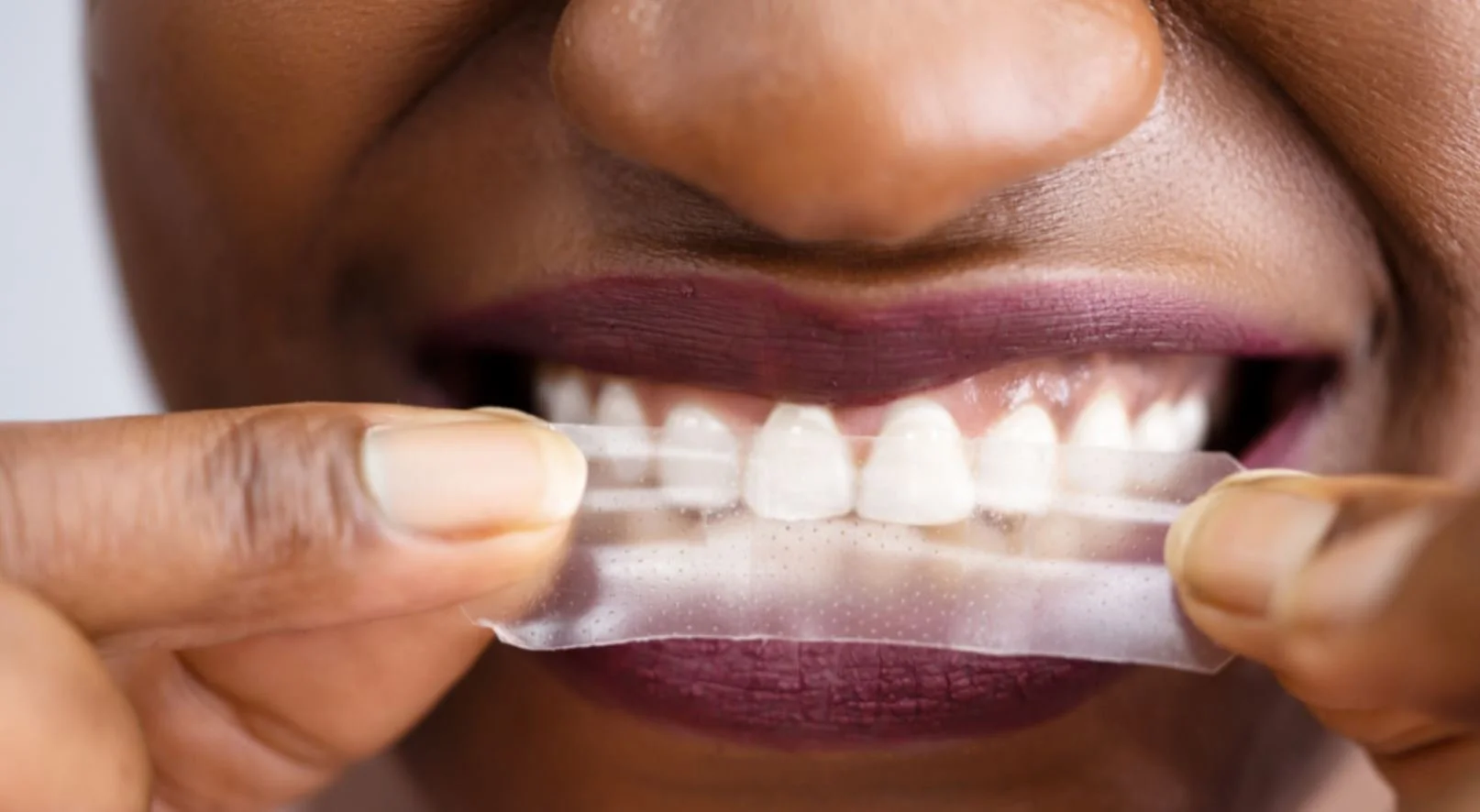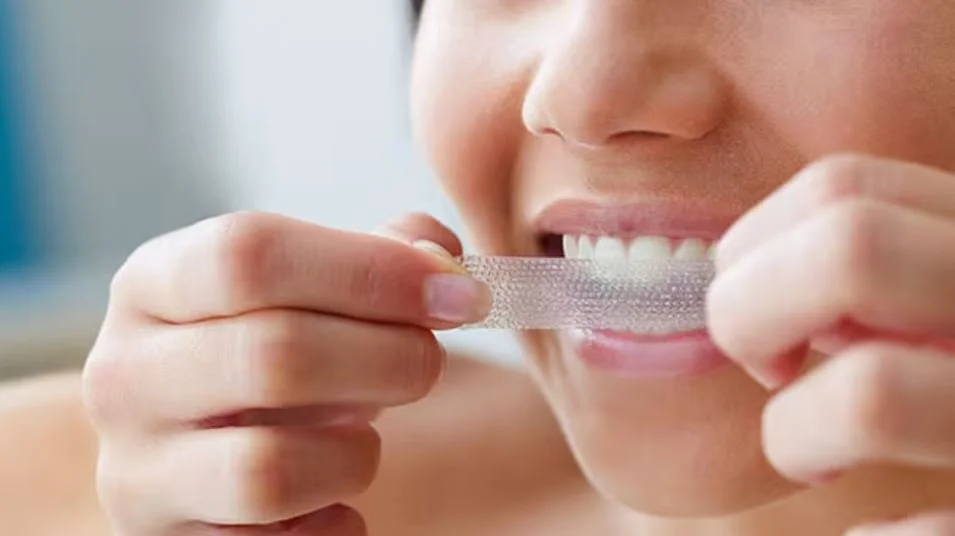The Truth about Teeth Whitening Strips
Whitening strips are everywhere—from drugstore shelves to influencer routines—but do they actually deliver the results they promise? And more importantly, are they safe for your teeth? If you’ve been thinking about trying Crest Whitestrips, this guide breaks down everything from how they work to potential side effects and when to consider professional alternatives.
By Dr. Stephanie Vera, DDS
At-home tooth whitening strips seem like an affordable and convenient option for whiter teeth, and they’re more popular than ever! But, the question dentists are often asked is: Do whitestrips really work?
The answer may surprise you, because yes they do! Before you give them a try, you’ll want to learn about some of the risks with this tooth whitening method and understand how they work.
How Do Crest Whitestrips Work?
Crest Whitestrips (and other whitening strips, for that matter) are small pieces of enamel-safe plastic coated in whitening gel and a bio-safe adhesive.
When applied, the polyvinylpyrrolidone (PVP) and carbomer adhesives allow the hydrogen or carbamide peroxide layer to coat the surface of the teeth and break down stains inside the microscopic pores of the enamel. This tooth “bleach” is the same as what dentists and dental offices use for in-office whitening, but at a lower concentration for at-home use.
How to use Crest Whitestrips?
Crest Whitestrips can be used once or twice a day, or if need be, every other day. When used for the appropriate amount of time, you will see a change in the color of your teeth after 3-5 days. But, due to the low concentration of the active whitening ingredient, full results can take up to 2-3 weeks.
After you’ve stopped using whitening strips, you can maintain your bright smile by using whitening toothpaste, like Crest Optic White. While the whitening gel in the strips breaks down deeper stains attached to the minerals of the enamel, regular use of whitening toothpastes can help slow new stains from occurring.
Are Crest Whitestrips Safe?
Crest Whitestrips have been approved by the American Dental Association (ADA) and FDA for whitening at home, and are safe for periodic or occasional, short-term use. Be mindful that the most common side effect of any whitening product is tooth sensitivity, and long term use or using multiple whitening products at once can increase this risk. Also, both the adhesive and whitening gel on the strips can irritate the gums. When used correctly though, they are considered safe – just be sure to listen to your body and follow the directions on the packaging!
Another common risk associated with any whitening strips is splotchy or irregular whitening of the teeth. Unlike whitening trays from your dentist, Crest Whitestrips are not custom fit and may not stick to the surfaces of the teeth evenly – especially if you have crowded or rotated teeth. In these cases, custom whitening trays from a dental office would be a better option.
Also, since the peroxide used in whitening products is bactericidal, it kills bacteria – including the good bacteria that help maintain your oral health. These good bacteria help prevent cavities and other dental problems, and too much peroxide can disrupt the balance of your oral cavity and create possible health issues.
Will Crest Whitestrips work for you?
To know if Crest Whitestrips or other at-home whitening is the best option for you, you need to understand if you’re teeth are discolored due to the enamel (outer layer of the teeth) or the dentin (middle layer of teeth).
Enamel staining occurs when dark colors from dark or vibrant food and drinks become trapped in the mineral structure of the enamel. These stains can be broken down and removed using hydrogen or carbamide peroxide whitening products, which work their way into the pores of the teeth where the stains have settled.
Dentin discoloration is caused by aging, trauma, or even from when the teeth were developing. Unfortunately, whitening will not be able to change the color of the inner layer of the teeth; if your teeth are discolored due to an accident or tetracycline staining, crowns or veneers would be the best option to brighten your smile.
How to Prevent Stains & Alternatives to Whitening Strips
For a brighter, whiter smile that will last a lifetime, prevention is key! To help keep surface stains from building up, follow these tips:
Practice good oral hygiene
Use an electric toothbrush
Drink water throughout the day
Limit dark or vibrant foods and drinks
Do not use tobacco products
Schedule regular dental checkups and cleanings
If you’re looking for an effective and cost effective way to brighten your teeth, whitening strips might just be the trick!
However, if you feel like your teeth are not responding to Whitestrips, or you are experiencing difficulty using them due to the potential risks or side effects, it's a good idea to see your dentist to discuss other options. Your dentist can offer custom whitening trays, in-house whitening treatments like ZOOM, or may even suggest veneers or crowns for dentin-related discoloration that can’t be changed with surface whitening.
Dr. Stephanie Vera is a general dentist practicing in Murphy, Texas. She is a graduate of Baylor College of Dentistry and believes education and prevention are essential to a happy, healthy smile.






